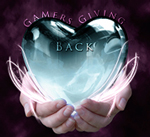13th
July
2009
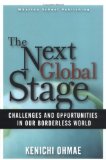

The Next Global Stage-Challenges and Opportunities in Our Borderless World
Author: Kenichi Ohmae
Publisher: Wharton School Publishing March 2005
Hardcover: 312 pages
In some ways, I was a little disappointed with this publication, yet in many others I was pleased to see Wharton School Publishing live up to the expectations I have of them in regards to the quality of their books. What I found disappointing in The Next Global Stage is that it is often repetitive. While certainly, there are points which may need reinforcing, I feel there were better ways the author could have approached the topic, and spent more time discussing global business for smaller enterprises instead of the large corporations.
The author did find a good balance of positive and negative factors to consider in regards to taking businesses out on the global market, but I found that the book focused too much on what governments were doing to enhance their share of the global strategy, and didn’t focus enough on individual businesses and what smaller companies could do to increase their global market share. We are not interested in outsourcing, which is covered extensively in this book. We keep our technical support in-house; primarily because we are global, and can offer support to those seeking our services in many languages, and usually from within their own country. The Next Global Stage, while doing a very good job of explaining how the global market is helping the economies of the countries this book focused on, it did not, in my opinion, adequately discuss the downfalls of outsourcing areas such as technical support services, and the public’s perception of this practice.
Read the rest of this entry »
posted in Books By: Tami |  Print This Post
Print This Post
10th
July
2009
Editor’s Note: I’ve read and reviewed many, many books in the past few years. Over the next week or so, I will be sharing reviews with our readers of the books which, while they may be older, in my opinion, the information their pages contain is still relevant to today’s world – and in some cases may have been predictive of current times.
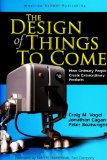

Design of Things To Come-How Ordinary People Create Extraordinary Products
Authors: Craig M. Vogel, Jonathan Cagan, Peter Boatwright
Hardcover: 272 pages
Publisher: Wharton School Publishing June 18 2005
Design of Things To Come is a must-read for anyone involved in business. This book not only goes through the innovative process, it covers other important information such as the wide variety of trademarks, from logos to trade dress. The authors have put this book together, and shared their knowledge in such a way that the principles they discuss can be used by practically any business to grow its market share.
This is the type of quality book I have come to expect from Wharton School Publishing, and one that I will make use of for many years to come. As a business owner, I was pleased to see many of the processes I have been doing correctly, as well as seeing many areas where we could improve – and the many ways in which they could be improved. The book is in no way overly-repetitive, and is written so well that it does not need an ample supply of diagrams to illustrate what the authors are trying to say.
Every page of Design of Things To Come contains useful information, and outlines innovative practices which can be easily adapted to the business at hand. The authors, in my opinion, have produced a goldmine for those of us who want to push our companies forward to the next level and beyond. Their advice on team building, motivation and rewards is invaluable. This is especially important for companies such as mine, which are globally situated and depend heavily on team work. This book also served to remind me of marketing and research practices I had learned way back in school, but had pushed into the background. Design of Things To Come has enabled me to get a lot of my primary focus back and work towards realigning, restating, and in some cases redeveloping areas of my business which were falling through the cracks. Read the rest of this entry »
posted in Books By: Tami |  Print This Post
Print This Post
17th
June
2009
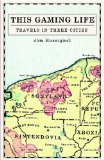

This Gaming Life: Travels in Three Cities
Author: Jim Rossignol
May 2008
224 Pages
There is much about this book which I liked, particularly the fairly in-depth look at the Korean gaming culture and how it differs from that in the west. It was also interesting to read about the political movements within games and how they have been used as protest platforms. I feel that as a person who is both a gamer and a person who works in the gaming industry, This Gaming Life brings to light many of the reasons why people play video games – for the challenges, social experiences or to simply escape the stresses of every day life. One of the other reasons given by the author is that gamers game to stave off boredom.
Jim Rossignol raises some very valid points on how the activity of playing video games has grown to become a central part of today’s culture, such as the social components in today’s games and the scientific studies being conducted to better understand the effect of video games on the human countenance. He examines at length the pros and cons of becoming engrossed in games, as well as some of the educational aspects. Topics also covered are the varying levels of importance some game development studios put on gamer interaction with development through gamer-made mods or playing the game in ways not expected by the developers. This is something which I have heard discussed at many game development conferences – that gamers will always find some way to play the game that was outside of the project vision.
Read the rest of this entry »
posted in Books By: Tami |  Print This Post
Print This Post
29th
January
2009
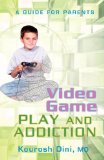

Video Game Play and Addiction – A Guide For Parents
Author: Kourosh Dini, MD
April 2008
151 pages
Update: Video Game Play & Addiction has received a 2009 Silver Award from Mom’s Choice Awards in the Resources category.
This book impressed me from the moment I cracked the cover and began reading. Kourosh Dini has written the most comprehensive, wide-view truth about game play and addiction book that I have read to-date.
In no way is this book stuffy or full of statistics and scientific mumbo-jumbo; instead, Dini uses a common-sense approach to the topic, but he does not limit his discussion solely to children who are addicted to video games. He begins by talking about the positive aspects of gaming, and why humans like to game – to learn and to enjoy the aspects of play in our lives. Play and Addiction gets extra points from me because the author discusses the fact that our school systems are very outdated and no longer meet the needs of our tech-savvy children.
Parents are also encouraged to be an active part of their child’s game play – observe, participate – learn and play together. I think that this is a very important section of the book, because as parents in a high-achievement oriented business world, time to play and connect with our children can often become a lower priority. One of the biggest benefits of following Dini’s suggestions is that we remain able to converse with our children, to know who they are, what they are doing, and why they like to play the games they do.
Read the rest of this entry »
posted in Books By: Tami |  Print This Post
Print This Post
30th
December
2008
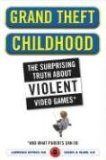

Grand Theft Childhood: The Surprising Truth About Violent Video Games and What Parents Can Do
Authors: Lawrence Kutner, Ph.D. and Cheryl Olson, Sc.D.
April 2008
I have mixed feelings about Grand Theft Childhood – it was not what I was expecting in a book whose subtitle offers help to parents who don’t know very much about video games, yet it was in its own way very in-depth and in the end, I can see it being helpful to uninformed non-gaming parents. While the studies and procedures are valid – the authors spend the first four or five chapters quantifying their research and comparing previous studies done by others – I feel that they rely too much on the processes and not enough on the advice they promised, which they don’t get to until Chapter 9.
Throughout the book, the authors show that kids are much smarter than we give them credit for when it comes to reality versus game environment. While there is that small percentage of the population who are effected by extenuating circumstances, that percentage is very small even when the playing of violent video games is added into the equation.
There is also a chapter about the government trend of trying to restrict or ban violent video games, and another on the rating system. As with every generation, there has to be some form of media which is adversely influencing our children, and this generation’s bad boy is video gaming. I was pleased to see that an abundance of feedback from the kids who were studied was included in this book – who better to help parents understand the attraction of video games than the kids who play them?
Read the rest of this entry »
posted in Books By: Tami |  Print This Post
Print This Post
29th
December
2008

The Art of Game Worlds
Dave Morris and Leo Hartas
September 22 2004
While this book has been out for a number of years, its content is very relevant to today’s game design. Authors Dave Morris and Leo Hartas have produced a volume of beautiful game environment artwork accompanied by in-depth interviews revealing the inspiration behind them. From the world as it was to the world as it may become, the artists behind the digital worlds we inhabit share their thoughts on the advances which have been made in game development. The importance of creating fantastical scenes while retaining some level of realistic relationship with the player is but one aspect of game art design covered in The Art of Game Worlds. Also discussed is using art, setting and lighting to elicit emotional responses from the gamer during play, as well as how the artists strive to add that “wow factor” with every new product.
I would highly recommend this book to anyone who wants to learn more about the development processes for environment design. The amount of knowledge shared by industry greats such as Chris Bateman, Ernest W. Adams, Mike Jeffries, Yusuke Naora, Cathy Campos and many more, makes the price of this book well worth the expense.
posted in Books By: Tami |  Print This Post
Print This Post
8th
December
2008


Mafiaboy – How I Cracked the Internet & Why It’s Still Broken
Michael Calce with Craig Silverman
2008
Mafiaboy – How I Cracked The Internet & Why It’s Still Broken reads more like a “what I did last summer” essay combined with a school research project than a true authoritative look at the problems inherent with security and the internet. I found Mr. Calce’s tale to be built more on ego and teenage swagger than on remorse. Granted, he did learn some good coding skills in his early career, but I find it hard to believe that an otherwise seemingly well-behaved kid had no foresight into the wrongness of his activities. At times I did wonder who he was trying to convince – himself, his family, or readers – that his foray into piracy, hacking and bot herding was nothing more than an innocent quest for knowledge gone wrong.
While I understand the lure of power and being able to do something no one else (or very few) can do, Mr. Calce broke the law, and he deserved all he got. Although he cautions others against following in his footsteps as the end result is not worth the brief intoxication of power, my respect falls on the side of the RCMP and FBI agents who put an end to Mafiaboy’s thoughtless attacks. I do not feel that his inclusion of very basic internet security information in any way redeems the millions of dollars in damage and lost time he caused.
Read the rest of this entry »
posted in Books By: Tami |  Print This Post
Print This Post
2nd
October
2008


On The Way To The Web: The Secret History of the Internet and its Founders
Michael A. Banks
2008
On The Way To The Web is one book which I highly recommend to anyone who wants a definitive history on the internet. The amount of research and time which was obviously spent on compiling and organizing the short but colourful history of this wonder known as the Web is very worthy of recognition.
For those of us who remember the coming of the internet, On The Way To The Web is a journey back in time, revisiting many events, products and ideas which seemed so futuristic and impossible twenty years ago which have now become common place or fallen by the wayside. I personally had forgotten all about ventures such as GameLine – the innovative download service for Atari 2600 games and game updates. While I’m sure that many of today’s gamers think that XBLA, Wii Shop and PlayStation Network were all 21st century inventions, GameLine was here first. Reading about GameLine again, I have to wonder where our games industry would be today if Atari hadn’t experienced the downslide it did right at the time of GameLine’s launch.
Read the rest of this entry »
posted in Books By: Tami |  Print This Post
Print This Post
28th
July
2008
Originally Written for KillaNet Community Resource in 2007
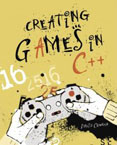 Creating Games in C++ : A Step-by-Step Guide
Creating Games in C++ : A Step-by-Step Guide
By David Conger and Ron Little
Paperback: 464 pages
Publisher: New Riders Games
February 2006
Creating Games in C++ : A Step-by-Step Guide has to be the greatest book to use when you want to start learning how to program games for Windows. This book is definitely aimed more towards the users who have not a clue where to begin or even start to learn how to program in C++ to make a game.
As you start reading, David and Ron will begin teaching at the very beginning of everything. Unlike other books, they do not assume you already know how to program fluently in C++. If you don’t know C++, great! This means you will get the full impact of the book. If you know very little C++, great! You can still learn too! By the end of the first few chapters you will feel like a C++ programmer because the book will make you a C++ programmer. Why stop at feeling like a C++ programmer? By the end of the book you will feel like a game developer! Did I mention that by the end of the book you create an actual game? Yeah. It’s true.
I’ve noticed in the book that they explain everything in full detail meaning it does not leave one single line of code unexplained. Also, the book comes with a fully loaded CD-ROM with all the code in the book, all the developing tools, a copy of a game engine that you will learn to use in the book for free, sound editing software, a programming environment, and much more! How can you go wrong there?!
If you take a look at the cover of this book, you see a controller which resembles a fairly popular design. This controller registers in your mind as “Games in 3D” when in fact there is no teaching of 3D game development. Instead they teach you 2D game development which is where you should start. Although the cover of the book is a little misleading, you will still be creating games which are in 2D and they always say you need to build up on top of knowledge and 2D is where you start first.
After you’re done reading the book, don’t get rid of it! There is still a glossary that you can have to always look up a game word that you might not know and need to know. The book also has a full index for reference too.
This book is recommended for people who want to learn C++ game programming and have no idea where to start. Get it. Read it. Make it. Play it. Enjoy it. This book gets a five out of five star rating from me.
posted in Books By: Josh Martin |  Print This Post
Print This Post
3rd
July
2008


Get Rich Playing Games
Scott Steinberg
2007
Get Rich Playing Games has got to be one of the most useful and entertaining “how to” books I have read recently. I can usually gauge the usefulness of a book by how much yellow highlighter I go through, how many post-it notes stick out from among the pages, and by how many research leads I garner. Scott Steinberg has penned another winner, and in my opinion the value of the information he shares in Get Rich Gaming far exceeds the cost of the book – which is very reasonably priced, by the way.
Get Rich Playing Games covers almost every aspect of the game industry, from pre-startup stage to getting the product on the shelf and beyond. Scott Steinberg doesn’t only focus on the game developers and designers, though. Throughout the book he discusses the important roles other people in the industry play, from the number crunchers and audio designers to the journalists who write the reviews. What I consider important about the inclusion of these different vocations within the videogame industry is that almost anyone who has the passion to work within the industry can probably find a career position for which they are perfectly suited. Not everyone has the knowledge, talent or passion to be an engineer or an artist, and Get Rich Playing Games shows that you don’t have to be able to paint the next fantasy art masterpiece to work in gaming.
Read the rest of this entry »
posted in Books By: Tami |  Print This Post
Print This Post
 Print This Post
Print This Post











